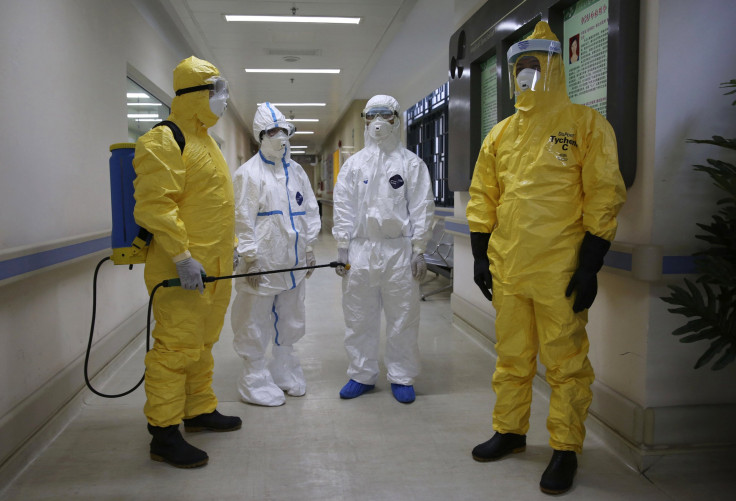Is Ebola Airborne? Aerial Transmission Of The Virus Cannot Be ‘Excluded’

As health officials take greater steps to keep someone with Ebola from traveling, and as hospitals grapple with disposing of the soiled garments and bedsheets of their Ebola patients, another concern has emerged: What if the virus goes airborne? That fear has been tossed around ever since the Ebola outbreak in West Africa began in March, and health officials have insisted that the virus cannot be transmitted without direct contact with the bodily fluids of an infected person. However, scientists demonstrated 25 years ago in lab testing that the virus could pass from one monkey to another through the air, leading some experts to say the possibility of the virus becoming airborne is real.
"We just don't have the data to exclude it," C.J. Peters, who researched Ebola in the late 1980s in Virginia, told the Los Angeles Times. As the virus passes from one host to another, it has more opportunity to evolve and take new shape. The fear is that the virus could mutate to become airborne and would be harder to discover.
The current Ebola outbreak has spread quickly, with almost 9,000 confirmed and suspected cases across West Africa and almost 4,500 deaths. Experts say there could be as many as 10,000 new cases per week in Guinea, Liberia and Sierra Leone by the end of this year, the World Health Organization has warned.
There is no evidence that any of those cases or any of the handful of cases abroad were transmitted through the air. However, aerosol transmission, in which droplets of bodily fluids from an infected person become airborne, is still a threat, Ebola experts say. “Any procedure where you’re invasive, where you’re ventilating, creating an aerosol, or where there’s blood or secretion contamination, you create a risk,” Nancy Jaax, who was part of the research team that showed the virus could pass between monkeys through the air, told the Washington Times.
Additionally, a U.S. Army manual on infectious diseases distributed to military and health care providers around the world warns of an airborne version of the Ebola virus. “In several instances, secondary infections among contacts and medical personnel without direct body fluid exposure have been documented,” the manual says of viral hemorrhagic fever, a category that includes Ebola. “These instances have prompted concern of a rare phenomenon of aerosol transmission of infection.”
© Copyright IBTimes 2025. All rights reserved.






















